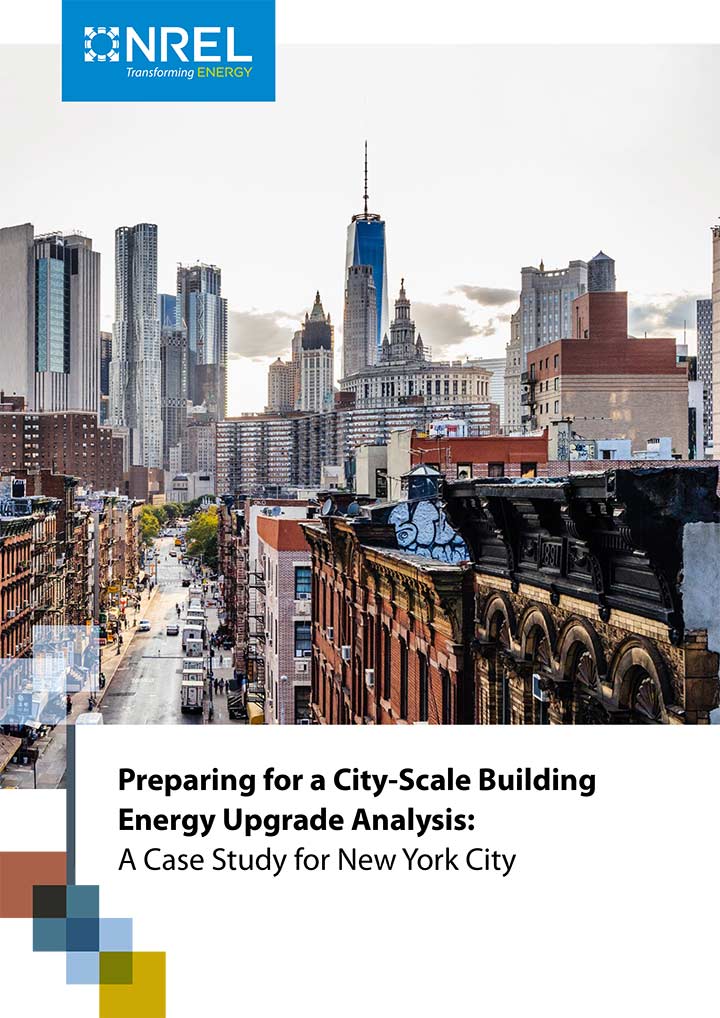NREL Releases Building Stock Analysis Case Study for New York City
A Step-by-Step Guide for Communities Evaluating Energy Savings Opportunities in Their Built Environment

The National Renewable Energy Laboratory (NREL) has released a new report, Preparing for a City-Scale Building Energy Upgrade Analysis: A Case Study for New York City. The case study outlines the key steps that New York City has taken in planning a citywide building stock analysis. It is now available as a resource for all American communities and policymakers interested in planning a building stock analysis to closely target local energy savings programs and investments.
Why is building stock analysis important? Imagine there is a million dollars’ worth of treasure buried within a few miles of your own home. You are handed a treasure map, but its scale is so large that your entire hometown just looks like a dot. This is the situation faced by city planners, real estate investors, policymakers, and utilities as they try to figure out where to invest in energy savings. An estimated $49 billion in utility savings is available among the 138 million homes within America’s built environment. Understanding exactly where to “dig” has become the billion-dollar question: what retrofits should be performed, at what building, and in what order?
A Building Stock Analysis Plan for Every American Community
To bring things into focus for policymakers, utilities, and other energy “treasure hunters” everywhere, NREL published this case study to show how any community can leverage unique, open-source building stock analysis software that drills all the way down to the individual facility and system level. NREL’s ResStock (for residential buildings) and ComStock (for commercial buildings) use NREL supercomputing capabilities to crunch an unprecedented amount of energy usage data—and deliver an unprecedented level of specificity in building stock analysis.
The study’s lead author, Janet Reyna, says it is important for communities to evaluate individual building energy use because it is actionable: “You need to be able to understand what's actually driving energy use to be able to know what to improve. If you don't have that sort of detailed, disaggregated analysis, you're kind of shooting in the dark.”
You need to be able to understand what's actually driving energy use to be able to know what to improve. If you don't have that sort of detailed, disaggregated analysis, you're kind of shooting in the dark.”
Over the past year, NREL researchers worked with the New York City Mayor’s Office of Sustainability to document the key steps in analyzing energy use of the buildings as part of the city’s 80 x 50 initiative, an ambitious project to achieve an 80% reduction in citywide greenhouse gas emissions by 2050.
As detailed in the case study, a successful building stock analysis plan should include targeted questions, a wide range of planning partners and stakeholders, rich sources of local data, the use of development and policy scenarios, and defined metrics. Other key steps include a results presentation and a post hoc gap analysis.
According to Reyna, the New York City project stood out for its high level of partner and stakeholder engagement. For example, the NYC Buildings Technical Working Group was integral to the building stock analysis planning process and included real estate partners, engineering firms, local universities, affordable housing advocates, different levels of government, labor unions, and environmental nonprofits.
What are your city, state, county, or utility energy and demand reduction goals? Contact [email protected] or [email protected] to learn more about how building stock analysis can expand your treasure map and provide you a clear path.
Last Updated May 28, 2025
